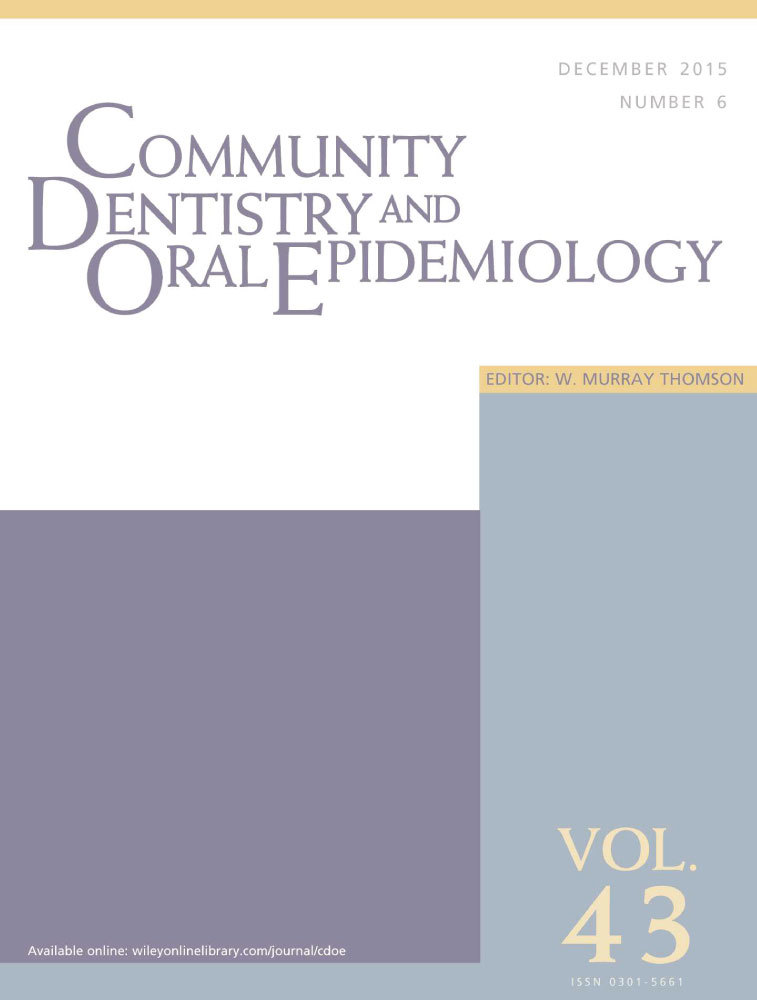Oral mucosal lesions’ impact on oral health-related quality of life in preschool children
Abstract
Objectives
The aim of this study was to assess the prevalence of oral mucosal lesions and their impact on oral health-related quality of life (OHRQoL) in children aged 5 years.
Methods
A sample of 1118 children from Pelotas’ birth cohort, born in 2004 (response rate of 85.8%), were selected to participate in the study. Data were collected using a questionnaire applied to mothers and from the oral examinations of the children. OML were identified by type, site, and size. Early Childhood Oral Health Impact Scale (ECOHIS) was used to assess caregivers’ perception on children's OHRQoL. Descriptive, bivariate, and multivariate Poisson regression analyses were carried out, considering the impact on OHRQoL (total ECOHIS score) as the outcome.
Results
The prevalence of the OML was 30.1% (95% CI 27.5–32.9). Ulcers were the more prevalent type of lesion (29.4%), and the most affected site was the gums (31.0%). In bivariate analysis, there was a positive association between the presence of OML and OHRQoL impact measured by the following: mean overall score of ECOHIS (P < 0.001); extent (P < 0.001); prevalence (P = 0.030); and intensity (P = 0.010). After adjustments for sociodemographic and oral health variables, children with OML presented higher impact on OHRQoL [rate ratio (RR) 1.38 95% CI 1.11; 1.72] comparing with their counterparts. Analyzing specific domains, children with OML also presented higher impact on children symptoms (RR 1.46 95% CI 1.20; 1.66) and family functional (RR 3.14 95% CI 1.59; 6.22) domains.
Conclusion
Almost one-third of children presented with oral mucosal lesions, and these lesions impaired children's oral health-related quality of life.




